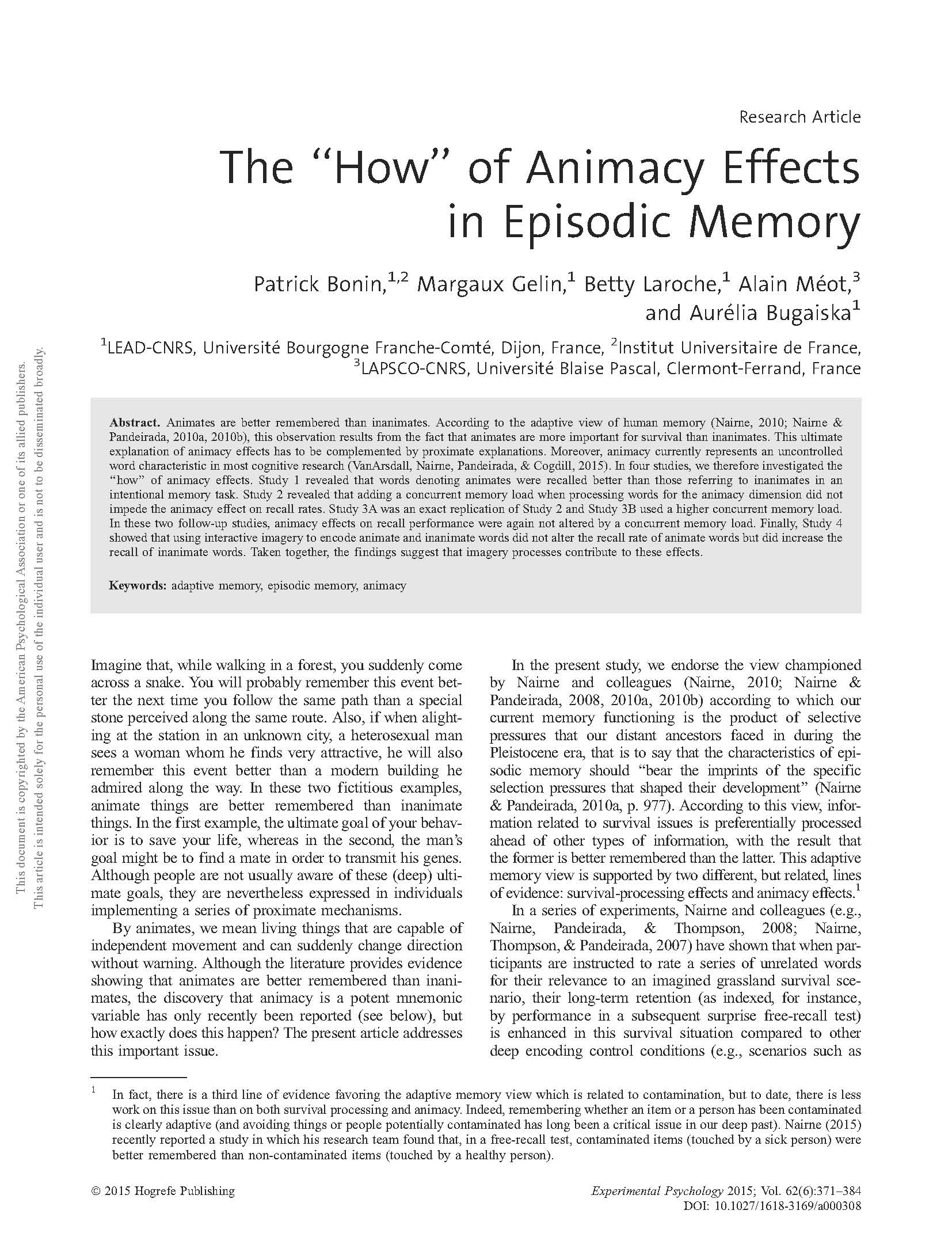Animates are better remembered than inanimates. According to the adaptive view of human memory (Nairne, 2010; Nairne & Pandeirada, 2010a, 2010b), this observation results from the fact that animates are more important for survival than inanimates. This ultimate explanation of animacy effects has to be complemented by proximate explanations. Moreover, animacy currently represents an uncontrolled word characteristic in most cognitive research (VanArsdall, Nairne, Pandeirada, & Cogdill, 2015). In four studies, we therefore investigated the ‘‘how’’ of animacy effects. Study 1 revealed that words denoting animates were recalled better than those referring to inanimates in an intentional memory task. Study 2 revealed that adding a concurrent memory load when processing words for the animacy dimension did not impede the animacy effect on recall rates. Study 3A was an exact replication of Study 2 and Study 3B used a higher concurrent memory load. In these two follow-up studies, animacy effects on recall performance were again not altered by a concurrent memory load. Finally, Study 4 showed that using interactive imagery to encode animate and inanimate words did not alter the recall rate of animate words but did increase the recall of inanimate words. Taken together, the findings suggest that imagery processes contribute to these effects
The “how” of animacy effects in episodic memory
